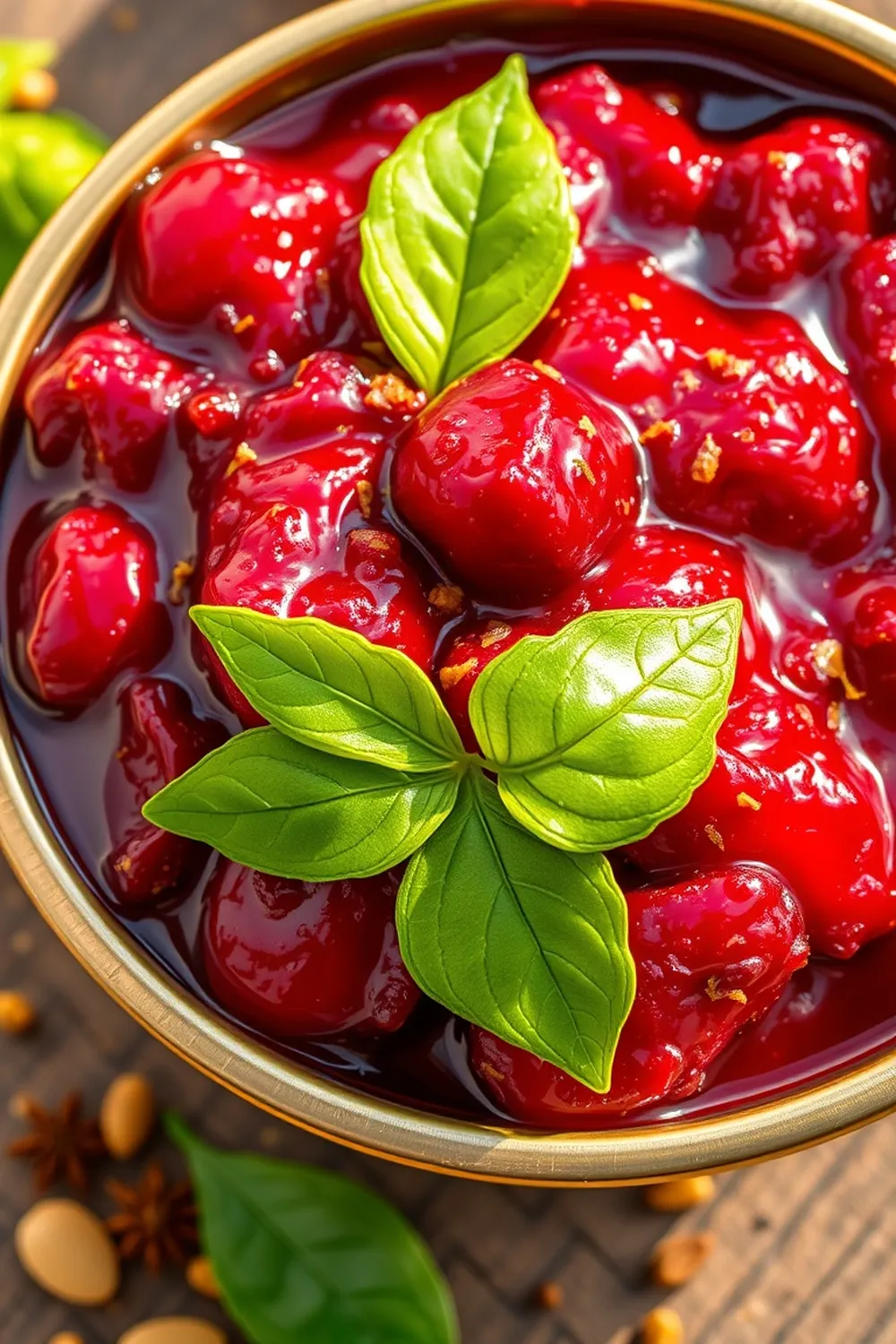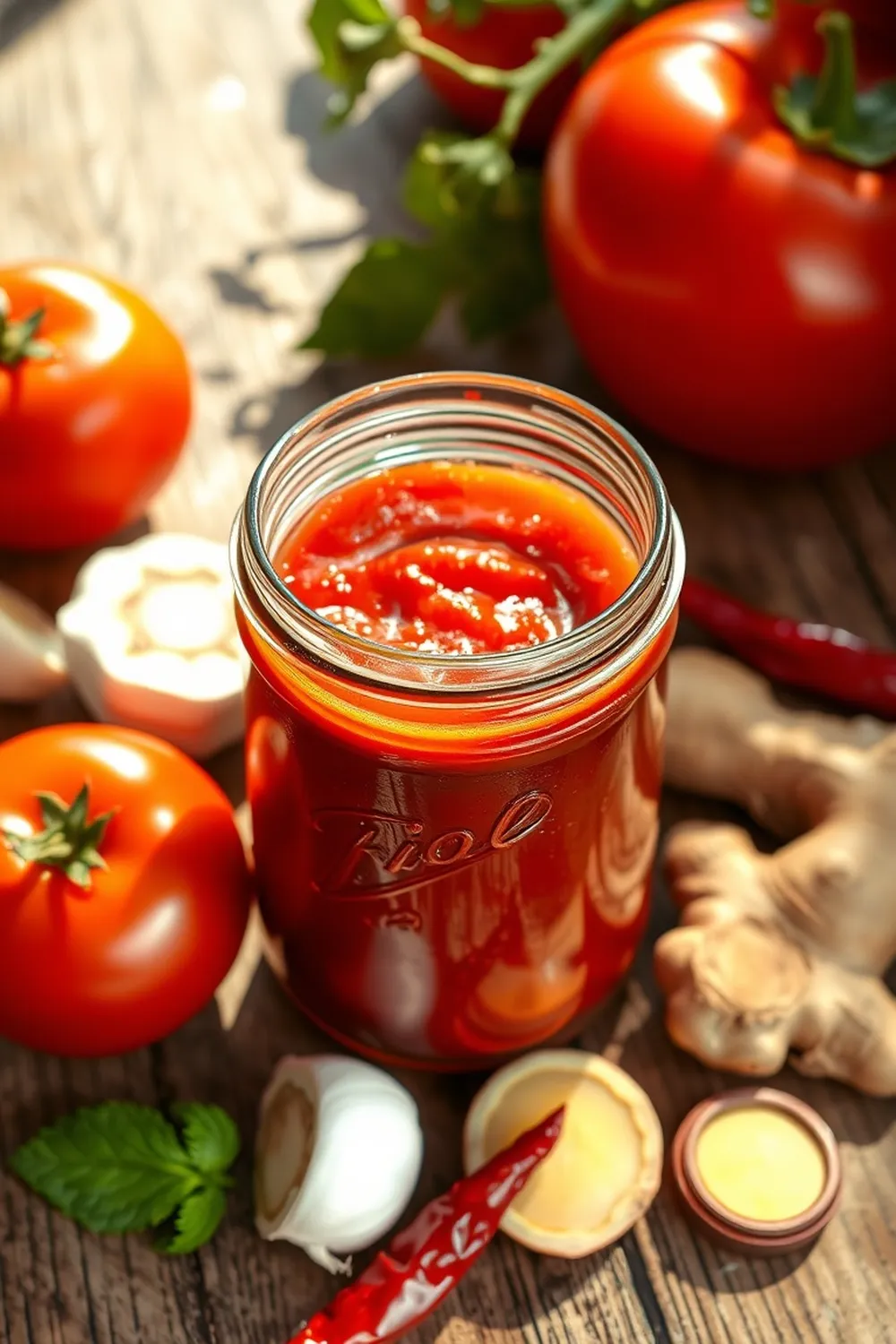- Boil 4 cups of water in a large vessel. Add the limes and let them soak, covered, for 5 minutes.
- Remove limes from the water, pat them dry thoroughly, and quarter them.
- Dry roast mustard seeds and fenugreek seeds until aromatic. Grind them into a fine powder.
- Combine quartered limes, spice powder, red chili powder, turmeric, and salt. Mix well.
- Heat oil in a pan. Add mustard seeds and asafoetida and allow them to temper. Let the oil cool completely.
- Pour the cooled tempering oil over the lime mixture. Mix thoroughly.
- Store in an airtight container. Refrigerate for up to 2 weeks.
- Calories:30 kcal25%
- Energy:125 kJ22%
- Protein:0.5 g28%
- Carbohydrates:3 mg40%
- Sugar:mg8%
- Salt:450 g25%
- Fat:2 g20%
Last Updated on 5 months ago by Neha Deshmukh
Authentic Indian Lime Pickle Recipe – Mustard & Fenugreek Flavors
Hey everyone! If you’ve ever tasted a truly good Indian lime pickle (nimbu ka achar), you know it’s something special. That tangy, spicy, slightly bitter flavor… it just wakes up your tastebuds! I remember my grandmother making this every year, and the aroma would fill the whole house. It’s a bit of a labor of love, but trust me, it’s so worth it. Today, I’m sharing my go-to recipe for an authentic Indian lime pickle, packed with mustard and fenugreek flavors.
Why You’ll Love This Recipe
This isn’t just any lime pickle. It’s a flavor explosion! The combination of mustard and fenugreek seeds creates a wonderfully complex base, while the Kashmiri red chili powder gives it a beautiful color and just the right amount of heat. Plus, it’s surprisingly easy to make – though it does require a little patience. You’ll love having this homemade pickle on hand to brighten up any meal.
Ingredients
Here’s what you’ll need to make this delicious lime pickle:
- 10 limes
- 2 tsp mustard seeds
- 0.25 tsp fenugreek seeds (methi seeds)
- 3 tbsp Kashmiri red chili powder
- 0.25 tsp turmeric powder (haldi)
- 1 tbsp salt
- 0.25 cup oil (I prefer mustard oil, but more on that later!)
- 1 tsp mustard seeds (for tempering)
- 0.25 tsp asafoetida (hing)
Ingredient Notes
Let’s talk ingredients for a sec. Getting the right ones makes all the difference!
- Limes: We’re using limes here, but you can absolutely adapt this recipe for lemons if that’s what you prefer (more on that later!).
- Mustard Seeds: Black mustard seeds are traditional, and they give that lovely pungent flavor.
- Fenugreek Seeds: Don’t skip these! They add a unique bitterness that balances the other flavors.
- Kashmiri Red Chili Powder: This is key for color and mild heat. It’s not super spicy, but it gives a gorgeous red hue to the pickle.
- Turmeric Powder: Adds a beautiful color and has anti-inflammatory properties – bonus!
- Salt: Use a good quality salt. I prefer sea salt.
- Oil: This is crucial for preservation. We’ll dive deeper into oil choices below.
- Asafoetida (Hing): A little goes a long way! It adds a savory, umami flavor that’s essential in Indian cooking.
Lime Selection & Preparation
Choosing the right limes is important. Look for limes that are firm and heavy for their size. This indicates they’re juicy! I usually give them a good wash and scrub before starting.
Mustard & Fenugreek Seed Quality
Freshness matters! Old spices lose their potency. If your mustard and fenugreek seeds don’t smell fragrant, it’s time to replace them.
Kashmiri Red Chili Powder – Color & Flavor
As mentioned, Kashmiri chili powder is special. It’s known for its vibrant color and relatively mild heat. If you can’t find it, you can substitute with regular chili powder, but reduce the amount to avoid making the pickle too spicy.
Oil Choice for Pickle Preservation
Traditionally, mustard oil is used for making Indian pickles because of its strong flavor and preservative qualities. However, you can also use other neutral oils like sunflower oil or vegetable oil. Just be aware that the flavor will be slightly different.
Regional Variations in Lime Pickle Recipes
Lime pickle recipes vary so much across India! Some regions add green chilies for extra heat, while others include garlic or ginger. Some pickles are oil-free, relying solely on the salt and lime juice for preservation. This recipe is a fairly classic North Indian style.
Step-By-Step Instructions
Alright, let’s get pickling!
- Boil the Limes: In a large vessel, boil 4 cups of water and add the limes. Cover and let them soak for about 5 minutes. This helps soften the rind and makes them easier to work with.
- Prepare the Limes: Remove the limes from the water and pat them completely dry. This is super important to prevent mold. Then, quarter the limes.
- Roast & Grind the Seeds: Dry roast the mustard and fenugreek seeds in a pan until they become fragrant. Be careful not to burn them! Once cooled, grind them into a fine powder.
- Combine the Spices: In a bowl, combine the chopped limes, spice powder, red chili powder, turmeric powder, and salt. Mix everything really well, making sure the spices coat the limes evenly.
- Temper the Oil: Heat the oil in a pan. Add the mustard seeds and asafoetida. Let them splutter and then immediately remove the pan from the heat. Let the oil cool completely. This is crucial! Hot oil will cook the limes and ruin the texture.
- Combine & Store: Pour the cooled tempering oil over the lime mixture. Mix thoroughly. Transfer the pickle to an airtight container. Refrigerate for up to 2 weeks. The flavors will develop and deepen over time.
Expert Tips
Here are a few things I’ve learned over the years:
- Achieving the Right Texture: You want the limes to be slightly softened but still hold their shape. The boiling step helps with this.
- Ensuring Proper Oil Coverage: Make sure all the limes are submerged in oil. This helps with preservation and prevents mold.
- Preventing Mold Growth: The biggest enemy of pickle-making is mold! Thoroughly drying the limes and using enough oil are key.
- Adjusting Spice Levels: Feel free to adjust the amount of red chili powder to your liking.
Variations
Want to get creative? Here are a few ideas:
- Vegan Lime Pickle: This recipe is naturally vegan!
- Gluten-Free Lime Pickle: Also naturally gluten-free.
- Spice Level Adjustments: For a milder pickle, reduce the red chili powder. For a spicier pickle, add a pinch of cayenne pepper.
- Festival Adaptations: This pickle is a staple during Diwali and Ugadi.
- Different Lime Varieties: You can use lemons instead of limes – it will be a lemon pickle, of course, but still delicious! My friend’s mom always makes a lemon-ginger pickle that’s amazing.
Serving Suggestions
This lime pickle is incredibly versatile! Serve it with:
- Dal and rice
- Roti or paratha
- Yogurt
- As a side with any Indian meal
Storage Instructions
Store the pickle in an airtight container in the refrigerator. It will keep for up to 2 weeks, but the flavor will continue to develop over time.
FAQs
Let’s answer some common questions:
How do I know if my lime pickle is spoiled? Look for signs of mold, an off smell, or a change in color. If you see any of these, discard the pickle.
Can I use bottled lime juice instead of fresh limes? I don’t recommend it. Fresh limes have a much better flavor and texture.
What is the purpose of asafoetida (hing) in this recipe? Asafoetida adds a unique savory flavor that’s essential in Indian cooking. It also aids in digestion.
How can I adjust the saltiness of the pickle? Add salt gradually, tasting as you go. Remember, the flavors will mellow over time.
Can I make a smaller batch of this lime pickle? Absolutely! Just halve or quarter the recipe.
What type of oil is best for long-term pickle storage? Mustard oil is traditionally used for its preservative qualities, but a good quality vegetable or sunflower oil will also work.
Enjoy making this delicious and authentic Indian lime pickle! I hope it brings a little bit of sunshine to your table. Let me know how it turns out in the comments below!










